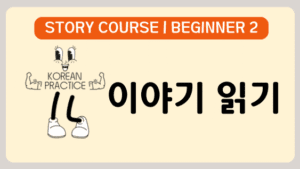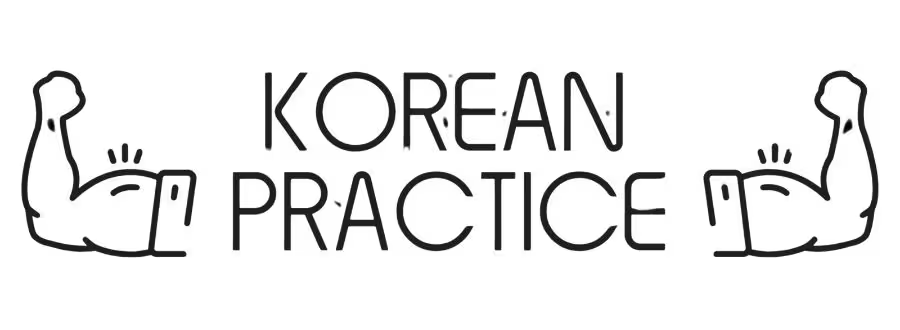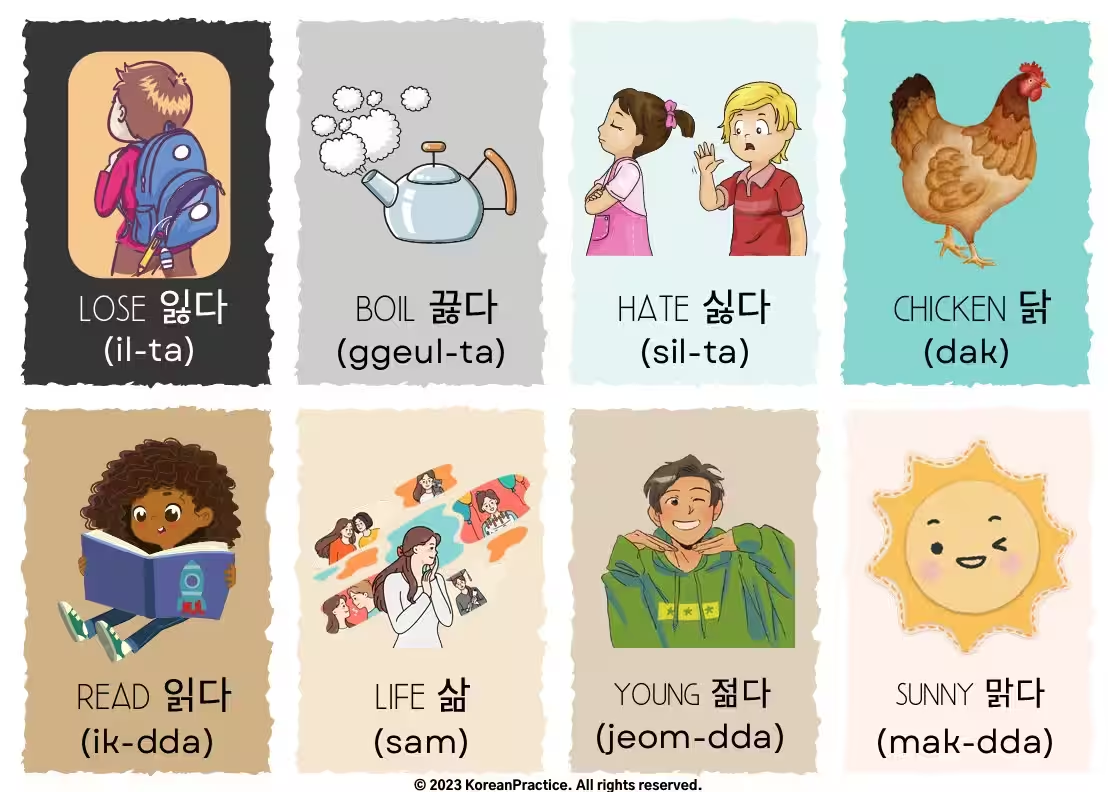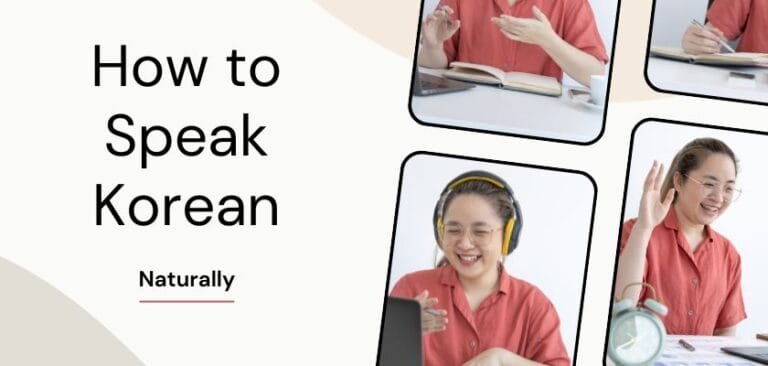Suh ChangWhoon
Written by 서 창훈, a certified Korean teacher with 14+ years of experience in Japan. He previously worked as a government officer, cybersecurity consultant, and English interpreter. Today, he teaches Korean in real classrooms without complex grammar explanations — instead, he trains students’ brains to speak naturally. His unique method is now the foundation of all his Korean courses.
Table of Contents
Why Korean Reading Practice Matters
Reading is a cornerstone
Reading is a cornerstone for mastering Korean. Effective Korean reading practice is essential, no matter your level. It provides:
- Vocabulary Expansion: Encounter words in context for better retention. This is especially true with consistent simple Korean reading practice, where you build a foundation.
- Grammar Acquisition: Understand sentence structure organically, not just through rules. Basic Korean reading practice is perfect for solidifying these fundamentals.
- Fluency Development: Improve reading speed and comprehension, leading to smoother speaking. Eventually, you’ll want to progress to Korean reading practice intermediate levels to tackle more complex texts.
- Cultural Insight: Gain a deeper understanding of Korean culture and perspectives through diverse reading materials.
The Textbook Trap: Why Traditional Methods Fall Short
Many learners struggle with:
- Disconnected Content: Textbook passages often lack relevance to real-life situations. This can make Korean reading practice feel like a chore.
- Rote Memorization: Focusing on isolated words hinders natural language absorption. This is often a problem, even with basic Korean reading practice materials in textbooks.
- Lack of Engagement: Dry material can lead to boredom and demotivation. Making simple Korean reading practice fun is key.

Story-Based Learning: A Powerful Alternative
- Immersive Experience: Engaging narratives draw you in and keep you motivated, making your Korean reading practice more enjoyable.
- Natural Acquisition: Absorb grammar and expressions effortlessly through context. This is far more effective than rote learning, whether it’s basic Korean reading practice or tackling more complex stories for Korean reading practice intermediate.
- Real-World Relevance: Learn language as it’s actually used in everyday conversations. Stories provide authentic examples for simple Korean reading practice.
- Enhanced Retention: Remember vocabulary and grammar better within the story’s framework.
Common Challenges in Korean Reading Practice
Many Korean learners face similar obstacles when trying to improve their Korean reading skills:
- Too many unknown words: It’s frustrating when every sentence contains unfamiliar vocabulary. This can be a significant hurdle when reading Korean.
- Complex grammar structures: Reading becomes difficult when grammar explanations feel overwhelming. Mastering grammar is key to Korean reading comprehension.
- Lack of engaging content: Textbook dialogues often feel artificial, making it hard to stay motivated. You need interesting material for effective reading Korean practice.
But what if there was a more enjoyable and effective way to practice reading Korean and improving your Korean reading skills?
How Story-Based Learning Makes Korean Reading Practice Easier
At Korean Practice, we believe that the most effective path to fluency involves engaging with authentic Korean content. And when it comes to Korean reading practice, there’s no better method than diving into stories that resonate with your current skill level. Forget rote memorization and dry grammar drills. We’re talking about immersing yourself in narratives that bring the language to life.
Our courses utilize short, engaging stories specifically designed to transform your Korean reading practice into an enjoyable and rewarding experience. These stories:
Introduce Vocabulary and Grammar in Context
You’ll encounter new words and grammatical structures not in isolation, but woven seamlessly into the narrative fabric. This contextual learning is crucial for understanding how Korean is actually used, unlike simply memorizing lists for your Korean reading practice.
Provide Natural Sentence Structures for Real-life Use
Instead of textbook examples, you’ll absorb authentic sentence patterns used by native Korean speakers. This exposure helps you internalize the nuances of the language and improve your comprehension for effective Korean reading practice.
Build Confidence with Progressive Difficulty
Our stories are carefully graded to gradually increase in complexity. As you progress, you’ll build a solid foundation of vocabulary and grammar, boosting your confidence in your Korean reading practice and overall language abilities. You’ll feel a real sense of accomplishment as you tackle increasingly challenging material.
By focusing on stories rather than isolated sentences or grammar rules, you learn Korean in a way that mimics how native speakers acquire their language. You’ll develop a deeper understanding of words and phrases through context, improve your reading comprehension, and find joy in your Korean reading practice journey.
This approach not only accelerates your learning but also makes the entire process more engaging and sustainable. So, ditch the flashcards and textbooks, and unlock the power of storytelling to master Korean reading! We focus our course around optimized Korean reading practice for the best learning outcome.
Example: How Stories Help You Learn Naturally
Let’s say you’re learning the word ‘비’ (bi), which means ‘rain.’ Instead of just memorizing the word, you see it in a story context:
Korean: 미안해. 어제 비가 와서 못 왔어.
Meaning: I’m sorry. It rained yesterday, so I couldn’t come.
In this sentence, you’re learning not just the word for rain (‘비’ – bi), you also see how 오다 (to come) is used with it, making it easier to remember, how to express regret (‘미안해’ – mianhae) and how to use conjunctions like ‘아서’ (-aseo) to connect clauses showing cause and effect. You see how the past tense is formed (왔어 – wasseo, from 오다 – oda, meaning “to come”). The ‘못’ before ‘왔어’ shows how to express inability.
By encountering this sentence in a context of apology and explanation, you are more likely to remember the words and grammar compared to simply memorizing isolated vocabulary lists. It provides a practical and relatable situatio
Example
- See how our storytelling course explains Korean and how easy it is to understand.
Original Korean Sentence
미안해. 어제 비가 와서 못 왔어.
Pronunciation Guide
미아내 (mi-a-nae). 어제 (eo-je) 비가 (bi-ga) 와서 (wa-seo) 모 (mo) 돳써 (dwat-sseo).
Meaning and Context
미안해 (I am sorry; in a casual way). 어제 (yesterday) 비 (rain) 가 (my subject is rain) 오 (to come) 아서 (because) * 못 (can not) 오 (to come) 았 (past tense) 어 (I’m telling you casually).
Pronunciation Patterns for Conjugations
⊳ 오 + 아 = 와. Rapidly pronouncing ‘오’ and ‘아’ results in ‘와’.
⊳ 오 + 았 = 왔. Similarly, ‘오’ and ‘았’ combine to form ‘왔’.
Grammar
* 못 before a verb indicates inability to do something.
English Translation
I’m sorry. It rained yesterday, so I couldn’t come.
Literal Translation
I’m sorry. (I) couldn’t come because rain come yesterday.
This is just a small taste of my sentence breakdowns.
My “Story Style Breakdown™” method — where I teach grammar through simple, story-like sentence breakdowns—is only inside my course.
Most Korean courses stop at grammar. Mine goes beyond — with stories, breakdowns, and real practice to help you speak.
Best Methods for Korean Reading Practice
1. Start with Stories at Your Level
Beginners should read simple, short stories with basic grammar and familiar words. Instead of struggling through advanced texts, start with stories that reinforce sentence patterns you already know.
Example
(Beginner Level)
Korean: 나는 아침에 커피를 마셔요.
Meaning: I drink coffee in the morning.
This sentence helps beginners understand simple subject-verb-object (SVO) structures, preparing them for longer passages.
Example
(Intermediate Level)
Korean: 친구와 카페에서 만났어요. 우리는 한국 드라마에 대해 이야기했어요.
Meaning: I met my friend at a café. We talked about Korean dramas.
For intermediate learners, reading stories with multiple sentences helps improve flow and comprehension.
That’s why our courses offer stories with different difficulty levels!
2. Read Aloud for Better Pronunciation
Reading aloud helps you:
Improve Pronunciation and Fluency (Pronunciation Drills): Reading aloud forces you to actively articulate Korean sounds and practice the correct mouth movements. It helps you internalize the proper pronunciation of individual words, including those tricky 받침 (batchim) consonants and vowel combinations. It’s a fantastic form of Korean Pronunciation Practice.
Develop Natural Rhythm in Korean (Korean Intonation Practice): Korean, like all languages, has its own unique rhythm and intonation patterns. Reading aloud exposes you to these patterns, helping you develop a more natural and less robotic speaking style. You begin to subconsciously absorb the way sentences flow and where the emphasis should be placed. This is crucial for effective Korean Speech Practice.
Boost Confidence in Speaking (Korean Speaking Practice): Practicing pronunciation in a safe, controlled environment (reading aloud) builds your confidence. As your pronunciation improves, you’ll feel more comfortable and willing to engage in actual conversations, leading to even faster progress in your overall Korean language journey. It’s a good foundation for more advanced Korean Conversation Practice.
Tip: Try recording yourself reading a short passage and compare it with a native speaker’s pronunciation.
3. Practice Reading with Audio Support
Listening to Korean while reading the text improves comprehension and pronunciation. Our courses include audio recordings, so you can listen to native pronunciation and practice reading along.
4. Practice Speed Reading to Boost All Skills
Most learners read at a comfortable pace, focusing on comprehension. While this is useful, speed reading takes your Korean skills to the next level.
What is Speed Reading?
Speed reading means reading the same passage multiple times while increasing your reading speed each time. The goal is not just to read faster, but to improve fluency, reaction time, and overall Korean proficiency.
How Speed Reading Helps All Language Skills
- Reading: Helps you process Korean text quickly and recognize words instantly.
- Speaking: Improves speaking speed and flow by training your brain to retrieve words faster.
- Listening: Trains your ears to process words at a natural speed, improving comprehension.
- Writing: Enhances sentence structure recall, making writing more fluid.
How to Practice Speed Reading
- Choose a short passage from a story or dialogue.
- Read it slowly once, focusing on comprehension.
- Read it again, but faster. Aim to reduce hesitation.
- Repeat 3-5 times, each time reading faster while maintaining accuracy.
- Say it out loud to improve both reading and speaking skills.
Try Story-Based Korean Reading Practice!
- At Korean Practice, we offer courses designed specifically to improve your Korean through stories.
From My Original Story Style Breakdown™ — A New Way to Truly Understand Korean
This is just one sentence from a complete learning system you won’t find anywhere else. — designed to help you understand Korean naturally, without getting lost in grammar rules.
When you can truly understand Korean sentences this way, speaking becomes much easier.
🟡 Sentence 1 of 7

Original Korean Sentence
사자가 코끼리를 잡아요.
Pronunciation Guide
사자가 (sa-ja-ga) 코끼리를 (ko-ggi-ri-reul) 자바요 (ja-ba-yo).
Meaning and Context
사자 (lion)
→ The lion — the one taking action now in the story.
가 (subject marker)
→ Points out that the lion is doing the action.
코끼리 (elephant)
→ The one the action is done to.
를 (object marker)
→ Shows that the elephant is the object being caught.
잡 (to catch, grab, take)
→ The action — the lion catches or grabs the elephant.
아요 (polite ending)
→ I’m telling you this in a polite and friendly way.
Real-Life Usage
잡아요 is common when talking about catching or holding something.
English Translation
The lion catches the elephant.
Literal Translation
Lion catch elephant.
Pattern Practice
사자가 토끼를 잡아요.
고양이가 쥐를 잡아요.
아이가 공을 잡아요.
강아지가 장난감을 잡아요.
In my full Story Course, each sentence comes with even more — depending on the sentence, you’ll also find grammar tips, pronunciation flow advice, and culture insights to help you truly understand and use Korean.
Start the Free Course
Still wondering how to read Korean?

This isn’t just another beginner lesson. It’s a complete system designed to change the way you think about Korean — from struggling with letters to reading real sentences, understanding the language, and speaking out loud with confidence.
Start the Story Course
Looking for super easy way to learn Korean?

Most Korean courses stop at grammar. Mine goes beyond — with stories, Story Style Breakdown™, and real practice to help you speak.
Free Korean Flashcard
FAQs (What You Might Still Wonder About)
1. ❓ Can I learn grammar without studying grammar rules?
Yes, and that’s exactly how native speakers learn! Our story-based method shows grammar in action, so you see how sentences are actually used. You absorb structures like “-아서/-어서” or past tense patterns naturally, without memorizing charts. It’s more effective and less frustrating than traditional grammar drills.
2. ❓ Is it okay to reread the same Korean story multiple times?
Absolutely—it’s one of the best things you can do. Each time you reread, your brain notices new details: vocabulary, grammar, sentence rhythm, and even cultural context. Repetition builds automatic understanding, which leads to better fluency and speaking speed.
3. ❓ How long should I spend on one reading practice session?
You don’t need hours—10 to 15 minutes a day with focused practice is enough. Read a short story, listen to the audio, and repeat it aloud. Consistency matters more than duration. Over time, you’ll build strong reading habits that make Korean feel natural.
4. ❓ Can stories help me with Korean speaking too?
Yes! Reading stories aloud with audio support trains your mouth, ears, and brain to work together. You learn sentence flow, pronunciation, and intonation in one activity. That’s why many learners say reading practice improves their speaking faster than conversation classes alone.
5. ❓ Why do Korean stories feel easier than textbook dialogues?
Because stories are emotionally engaging and context-rich. Your brain pays more attention to characters, emotions, and actions than to random example sentences. This emotional connection makes it easier to remember vocabulary and grammar—and actually enjoy learning.
6. ❓ Do I need to memorize vocabulary from each story?
Not at all. You’ll see the same words pop up again and again in different stories, which helps you remember naturally. If a word is important, your brain will catch it. We also provide flashcards to help you review—but memorization is optional, not mandatory.
Final words: Make Korean Reading Fun and Effective
Korean reading practice doesn’t have to be difficult! By using story-based learning, you can improve your comprehension naturally while enjoying engaging content.
Try reading short stories, listening to audio, and practicing out loud to build confidence and fluency.
🚀 Start your Korean reading journey today!









